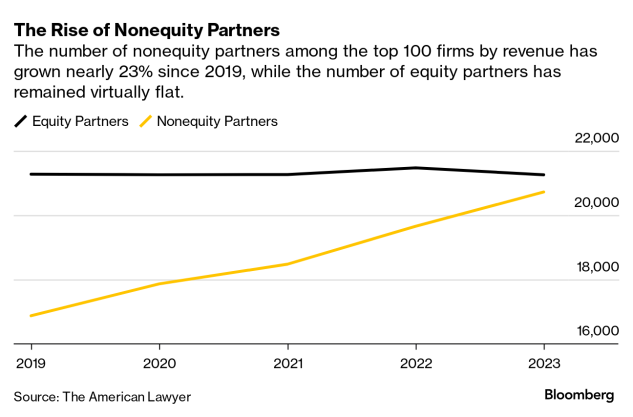-
Cleary Gottlieb introduced a nonequity partner tier to expand promotion and development opportunities.
-
Similar moves have been made by firms like Paul Weiss and Cravath as industry norms shift.
-
Since 2019, nonequity partner ranks have increased by nearly 23% at top U.S. firms.
Cleary Gottlieb Steen & Hamilton is joining a growing list of elite law firms in creating a nonequity partner tier, a structural shift that reflects changing dynamics within Big Law.
According to Law.com, the firm’s announcement emphasizes the need for “innovation and adaptation” in providing career opportunities for its attorneys. The tier is effective immediately and is expected to offer greater flexibility in promotions and development paths, according to Cleary managing partner Michael Gerstenzang.
Details of the Nonequity Partner Tier
-
The nonequity tier will see its first candidates when the firm has its annual partnership evaluations, Gerstenzang said, without specifying how many lawyers would join the new tier.
-
Cleary had 180 equity partners last year, which was 11 more than in 2022 and roughly the same as the firm had in 2019. The firm announced the promotion of 15 lawyers to partners in late October last year.
-
Cleary is not looking for a certain critical mass to be nonequity, but rather allowing those that go into that track to "grow as professionals in the nonequity tier and to have the opportunity to become a partner."
-
Gerstenzang declined to specify nonequity partner salaries but said they would be commensurate with the market.
-
The firm’s revenue in 2023 was nearly $1.5 billion and its partners earned on average $4.5 million. Gerstenzang said it was "too early to tell" how the new track would affect the firm's average profits per equity partner.
Single-Tier Partnerships Becoming Increasingly Rare
Cleary’s announcement follows other top-tier firms that have introduced nonequity partner structures citing talent development, recruiting and retention advantages, flexibility, and the ability to build scale quicker:
-
Wilmer Cutler Pickering Hale and Dorr
-
Paul, Weiss, Rifkind, Wharton & Garrison
-
Cravath, Swaine & Moore
As single-tier partnerships are becoming increasingly rare. many firms adding nonequity partners are responding to an “imperative” to grow their scale and profitability, Kent Zimmermann, a principal at law firm consultancy Zeughauser Group, told Bloomberg Law.
According to Law.com data, the ranks of non-equity partners among the top 100 firms by revenue has increased by nearly 23% since 2019. The total number of equity partners has remained flat over that period. The two groups are now roughly the same size among the 100 largest firms.











